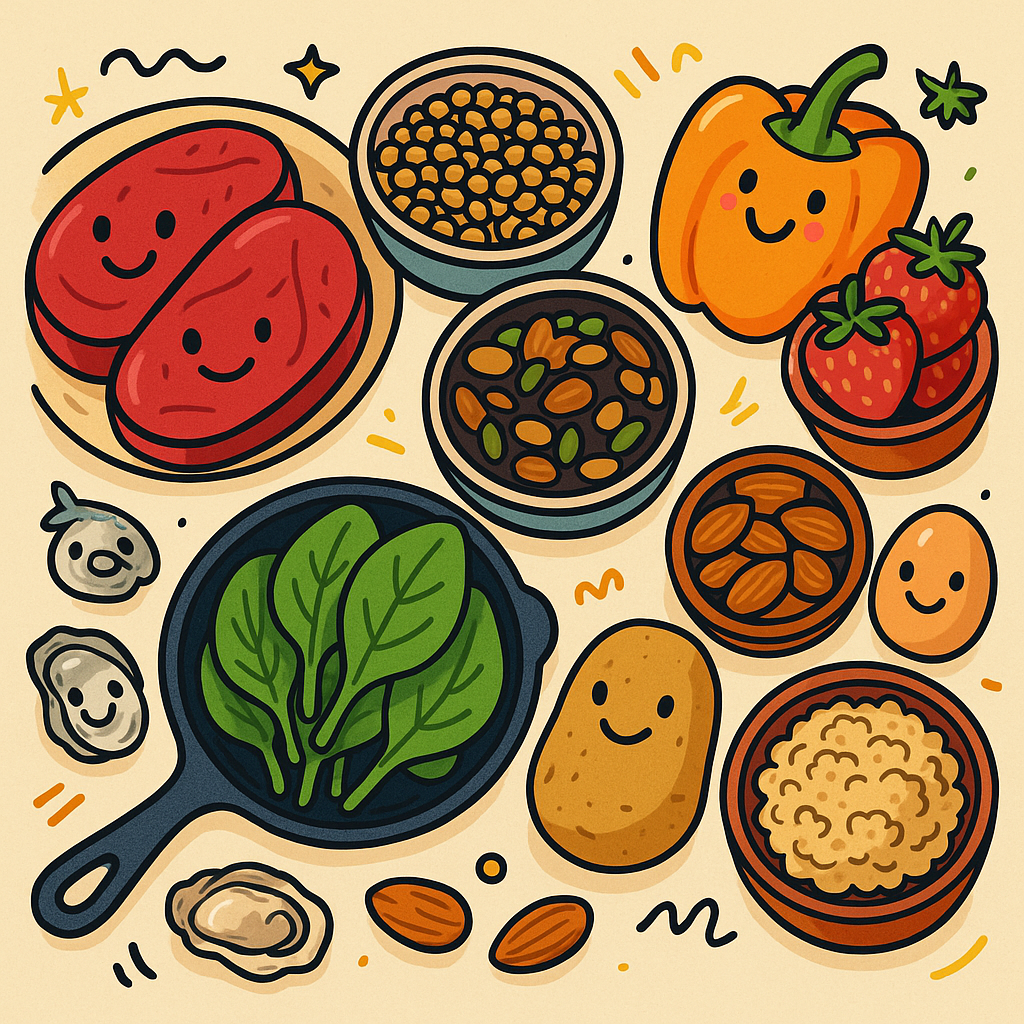Iron: An Essential Nutrient for Health
Iron plays a crucial role in the body. It is essential for transporting oxygen via hemoglobin in red blood cells from the lungs to all tissues. Iron is also necessary for delivering oxygen to muscles, supporting sustained energy production, and helping to prevent fatigue. Additionally, iron is involved in breathing, energy metabolism, immune function, brain development, growth in children, cellular function, and hormone production.
Iron Deficiency and Anemia
When iron levels are too low, it can lead to iron deficiency anemia—the most common nutritional deficiency worldwide. Symptoms include weakness, fatigue, and lightheadedness. Groups at high risk for iron deficiency anemia include menstruating women, pregnant women, children, older adults, vegetarians and vegans, and individuals with chronic kidney disease or those on dialysis.
Types of Iron in Food
Iron is found in two forms: heme iron and non-heme iron. Heme iron is found in animal-based foods and is easily absorbed by the body. Sources include beef, poultry, pork, lamb, eggs, organ meats, oysters, clams, mussels, shrimp, and fish. Non-heme iron is found in plant-based foods and is absorbed less efficiently. Sources include beans, lentils, nuts and seeds, spinach, potato skins, and fortified cereals.
To boost non-heme iron absorption, pair it with vitamin C-rich foods such as citrus fruits, strawberries, tomatoes, red and green peppers, broccoli, kale, and peas. For example, try a spinach salad with lemon juice or almonds with strawberries. Avoid consuming coffee, tea, or calcium-rich foods or beverages at the same time as iron-rich meals, as they can inhibit iron absorption. Cooking with a cast iron skillet can also increase the iron content of your food.
Iron Storage and Testing
Iron is stored in the body as ferritin and transferrin. Ferritin is stored in the liver, spleen, muscle tissue, and bone marrow. Transferrin is a protein that binds iron and transports it through the blood. Doctors can check ferritin and transferrin levels to assess for iron deficiency anemia.
Iron Supplements
Some individuals may need iron supplements, which should be discussed with a healthcare provider. Possible side effects of supplements may include nausea, constipation or diarrhea, stomach discomfort, and dark-colored stools.
Recommended Dietary Allowances (RDA) for Iron
The Recommended Dietary Allowances (RDA) for iron vary by age and gender.
-
Men (19–50 years): 8 mg/day
-
Women (19–50 years): 18 mg/day
-
Pregnant women: 27 mg/day
-
Lactating women: 9 mg/day
-
Adolescents (14–18 years): 11 mg/day (boys), 15 mg/day (girls)
-
Women (51+ years): 8 mg/day
These needs are higher during pregnancy and menstruation due to increased blood loss and the rapid growth of the fetus, which significantly increases the body’s demand for iron.
Can You Get Enough Iron from Diet Alone?
Yes! Here’s how: include a protein source at every meal and snack. Combine non-heme iron foods with vitamin C-rich foods. Avoid iron inhibitors like tea, coffee, and calcium-rich foods around iron-rich meals. And cook using cast iron cookware to naturally boost iron content in your food.
